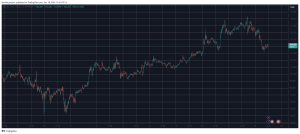Centralized cryptocurrency exchanges (CEX) continue to play a crucial role in the crypto ecosystem, serving as main platforms for the purchase, sale, and exchange of cryptocurrencies.
Despite the growth of decentralized finance (DeFi), centralized exchanges remain essential due to their ease of use, liquidity, and established infrastructure.
However, with the increase in regulation, the future of CEX is rapidly evolving. Let’s explore the current situation of centralized exchanges and the regulatory context that is shaping their operations.
Importance of centralized exchanges (CEX) in the crypto world
CEX, like Binance, Coinbase, and Kraken, have constituted the heart of the cryptocurrency market for years. They offer easy access to retail and institutional investors, facilitating the trading of digital assets. Thanks to their security, liquidity, and ease of use, they simplify complex operations such as margin trading and futures contracts, which are difficult to manage on decentralized platforms.
However, their centralized nature also makes them custodians of users’ funds, raising concerns about trust and security. High-profile episodes, such as the collapse of FTX in 2022, have amplified fears about the transparency and security of users’ assets. As a result, regulation has become increasingly essential to define the future of CEX.
Regulatory developments in 2024
- Europe: the European Union introduced the Markets in Crypto-Assets regulation (MiCA), which came into effect in July 2023. MiCA imposes stringent requirements on CEX, such as the obligation to obtain licenses to operate in the EU. From January 2026, exchanges will need to verify the identity of senders and recipients for transactions exceeding a certain threshold, in order to combat money laundering and improve consumer protection.
- United States: in the United States, the regulatory landscape is fragmented, but there are ongoing efforts to clarify the status of criptovalute as securities or commodities. Legislative proposals like the Financial Innovation and Technology for the 21st Century Act aim to establish a clearer framework. Although progress at the federal level is slow, state-level regulations continue to influence the operations of CEX.
- Asia: in Asia, regulations vary widely. South Korea approved the Virtual Asset Users Protection Act in 2023, which imposes stricter requirements for transparency and user protection. Japan has also strengthened its regulations, requiring more detailed sharing of customer information to prevent money laundering. China, on the other hand, maintains a strict ban on crypto trading and mining.
- Latin America: Brazil has legalized cryptocurrencies as a payment method and introduced regulations for exchanges within the framework of the Legal Framework for Virtual Assets law. The Central Bank of Brazil supervises the activities of exchanges to ensure compliance with anti-money laundering (AML) and know your customer (KYC) rules.
- Global trends: the Financial Stability Board (FSB) has published global recommendations to regulate activities related to crypto assets, promoting a more coordinated approach among different jurisdictions. These guidelines emphasize the need for exchanges to adopt comprehensive AML practices and ensure greater transparency.
Key challenges and future prospects for crypto CEX
Despite regulatory progress, there are several challenges that CEX must face:
- Compliance burden: with the increase in regulations, exchanges must invest heavily in compliance measures such as KYC, AML protocols, and transaction monitoring systems. Smaller exchanges might struggle to meet these new requirements, leading to a potential market concentration.
- Cross-border operations: one of the biggest issues for CEX is managing the complexity of different international regulations. Although MiCA aims to standardize the rules within the EU, the requirements still vary between countries, making it difficult for exchanges to operate seamlessly on a global level.
- Security risks: despite regulatory efforts, security remains a significant concern. The failure of FTX highlighted the vulnerabilities of centralized systems, such as poor fund management and lack of transparency. With the increase in regulation, it will be necessary to improve transparency and strengthen internal controls.
Conclusion
The CEX exchanges remain central in the global cryptocurrency market, providing essential services to millions of users. However, the regulatory context is evolving to ensure that these platforms operate in a more transparent and secure manner.
In 2024, centralized exchanges will face increasing pressure to comply with stricter regulations, shaping the future of the crypto sector. The balance between innovation and investor protection will be the key to their future success.





















